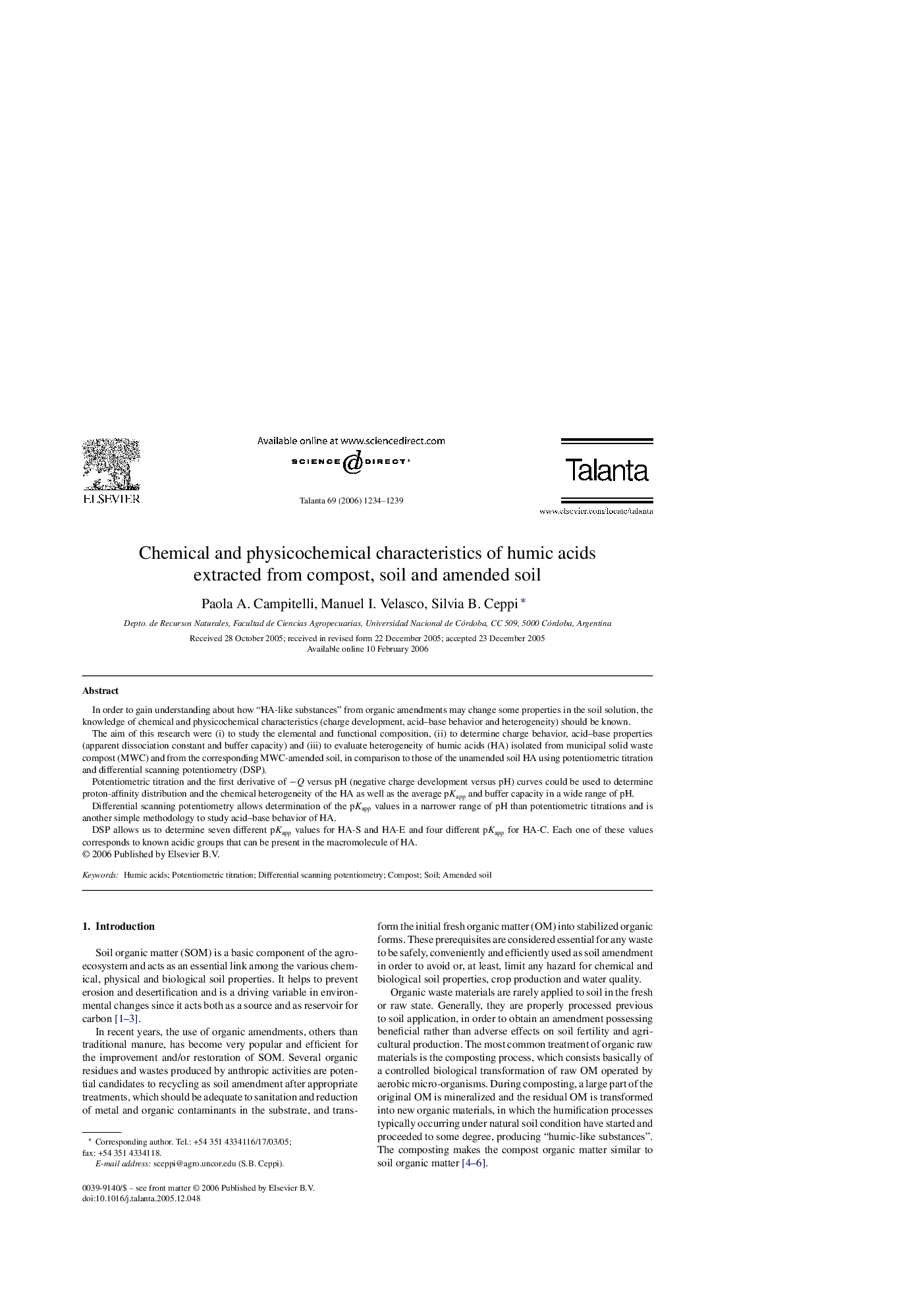| Article ID | Journal | Published Year | Pages | File Type |
|---|---|---|---|---|
| 1245697 | Talanta | 2006 | 6 Pages |
In order to gain understanding about how “HA-like substances” from organic amendments may change some properties in the soil solution, the knowledge of chemical and physicochemical characteristics (charge development, acid–base behavior and heterogeneity) should be known.The aim of this research were (i) to study the elemental and functional composition, (ii) to determine charge behavior, acid–base properties (apparent dissociation constant and buffer capacity) and (iii) to evaluate heterogeneity of humic acids (HA) isolated from municipal solid waste compost (MWC) and from the corresponding MWC-amended soil, in comparison to those of the unamended soil HA using potentiometric titration and differential scanning potentiometry (DSP).Potentiometric titration and the first derivative of −Q versus pH (negative charge development versus pH) curves could be used to determine proton-affinity distribution and the chemical heterogeneity of the HA as well as the average pKapp and buffer capacity in a wide range of pH.Differential scanning potentiometry allows determination of the pKapp values in a narrower range of pH than potentiometric titrations and is another simple methodology to study acid–base behavior of HA.DSP allows us to determine seven different pKapp values for HA-S and HA-E and four different pKapp for HA-C. Each one of these values corresponds to known acidic groups that can be present in the macromolecule of HA.
